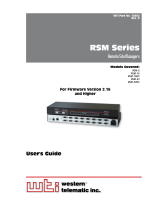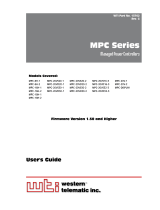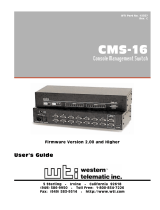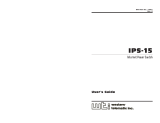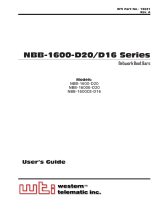
CHAPTER 3: Overview
15
3. Overview
The Secure Site Managers provide in-band and out-of-band access to RS-232
console ports and maintenance ports on UNIX servers, routers and any other network
element that includes a serial console port. System administrators can access the
Secure Site Manager via TCP/IP network, using SSH or Telnet, or out-of-band via
modem or local terminal. The Secure Site Manager features two separate command
interfaces; a convenient, user-friendly web browser interface, and a simple,
command driven text interface.
Intelligent Port Selection
Each of the Secure Site Manager’s RS232 serial ports can be individually accessed
by number, name or group via SSH or Telnet sessions. The Secure Site Manager also
allows direct connections using TCP port assignments. Each Secure Site Manager
serial port can be separately configured using simple menu driven commands to set
the port password, data rate, flow control and other operating parameters.
The full matrix capability of the Secure Site Manager allows you to easily connect
any two ports on the switch, even when the ports are using different communications
settings. Ports can also be connected or disconnected by a third party with
supervisor rights, and system managers can swap various RS232 devices between
ports at a remote location.
Security and Collocation Features
Secure Shell (SSHv2) encryption and address-specific IP security masks prevent
unauthorized access to command and configuration functions. The Secure Site
Manager also provides two different levels of user security; the Supervisor level
and the Non-Supervisor level. The Supervisor level, which is intended for use by
system managers and other administrators, provides complete access to all Secure
Site Manager port connection / disconnection functions, operating features and
configuration menus, and also allows access to any port on the switch. The Non-
Supervisor level is ideal for collocation applications, since users are only permitted
to view status and connect to the ports allowed by their password.
Capture Buffer
“Buffer Mode” allows individual ports to capture and store incoming data, such as
error and status messages received from attached console ports. This “snapshot”
of the last data received is stored in memory, and can be viewed, saved, or erased
by the system operator at any time. Console messages can be stored in the Secure
Site Manager port buffers, and sent to a remote location via SYSLOG, or an SNMP
message can be generated to alert administrators when new console messages are
received.




















